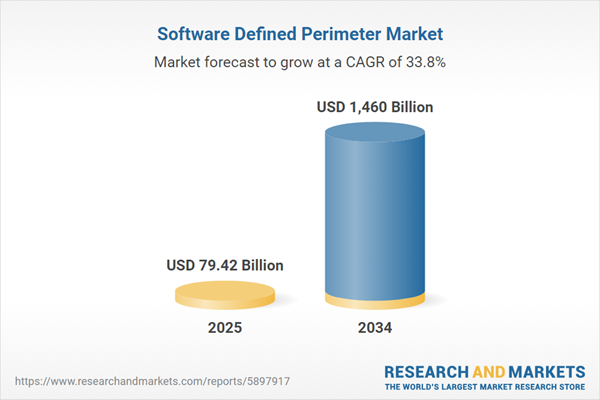The global software defined perimeter industry is being driven by the growing instances of cybercrime and cyber-attack across the world, resulting in the increased demand for cybersecurity. SDP acts as an organisation’s virtual perimeter that restricts any unauthentic access to enterprise applications, thus, providing enhanced security.
Properties and Applications
A software defined perimeter is an approach to computer security, which creates one-to-one network connections between the user and the device. The global software defined perimeter industry can be divided based on segments like enforcement points, components, deployment modes, organisations, end-uses, and regions.Breakup by Enforcement Point
- Controller
- Gateway
- End Point
Breakup by Component
- Solutions
- Services
Breakup by Deployment Mode
- Cloud
- On-Premises
Breakup by Organisation
- Small and Medium Enterprises
- Large Enterprises
Breakup by End Use
- Telecom Service Providers
- Cloud Service Providers
- Information Technology Enabled Services
- Defence
- Banking, Financial Services, and Insurance
- Media and Entertainment
- Government
- Education
- Healthcare
- Others
Breakup by Region
- North America
- Europe
- Asia-Pacific
- Latin America
- Middle East and Africa
Market Analysis
Organisations across the world are continuously adopting enhanced cyber security measures to protect their data from cyber-attacks. The major factors driving the growth of the global software defined perimeter industry are the growing demand for policy driven and programmable security framework, the growing consumer preference for cloud-based applications, and the enhanced regulation and compliance requirements in various organisations to fight cyber-related threats. The rising demand for cost-effective solutions is aiding the growth of cloud-based services, further fulfilling the security needs of the ever-growing IT sector. The increased government initiatives and advancement in technology is further supporting the industry growth.The end point segment, among other enforcement point types, accounts for the largest share in the market and is further anticipated to grow at the fastest rate in the forecast period. Further, due to the increasing demand for cloud deployment mode, the segment is anticipated to account for a significant share in the global industry.
However, the lack of awareness regarding cybersecurity coupled with the reduced IT standards across the industries may restrain the growth of the global software defined perimeter market in the forecast period.
Competitive Landscape
The report presents a detailed analysis of the following key players in the global software defined perimeter industry, looking into their capacity, market shares, and latest developments like capacity expansions, plant turnarounds, and mergers and acquisitions:- Check Point Software Technologies Ltd.
- Intel Corporation
- Fortinet, Inc.
- Juniper Networks, Inc.
- Palo Alto Networks, Inc.
- Others
Table of Contents
Companies Mentioned
The key companies featured in this Software Defined Perimeter market report include:- Check Point Software Technologies Ltd.
- Intel Corporation
- Fortinet, Inc.
- Juniper Networks, Inc.
- Palo Alto Networks, Inc.
Table Information
| Report Attribute | Details |
|---|---|
| No. of Pages | 179 |
| Published | August 2025 |
| Forecast Period | 2025 - 2034 |
| Estimated Market Value ( USD | $ 79.42 Billion |
| Forecasted Market Value ( USD | $ 1460 Billion |
| Compound Annual Growth Rate | 33.8% |
| Regions Covered | Global |
| No. of Companies Mentioned | 6 |









